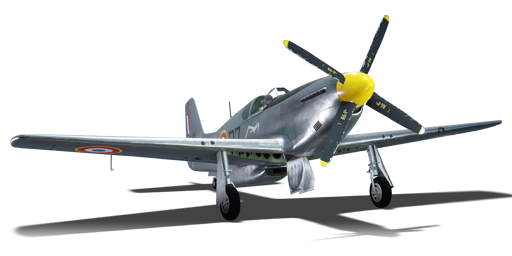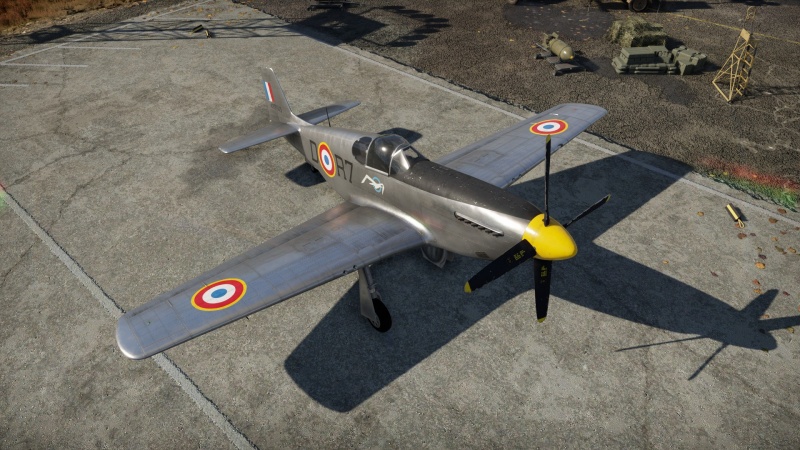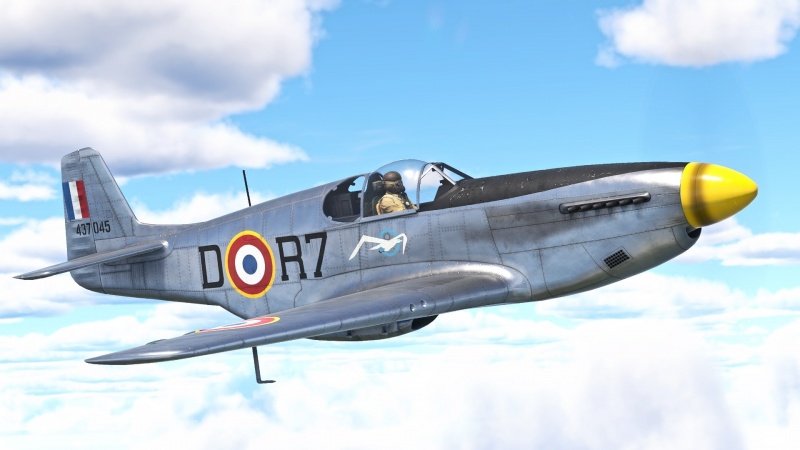Difference between revisions of "F-6C-10-NA"
(→Usage in battles) (Tag: Visual edit) |
m (corrected the name of the plane from F-6C-10-NT to F-6C-10-NA) (Tag: Visual edit) |
||
| Line 94: | Line 94: | ||
== Usage in battles == | == Usage in battles == | ||
<!-- ''Describe the tactics of playing in the aircraft, the features of using aircraft in a team and advice on tactics. Refrain from creating a "guide" - do not impose a single point of view, but instead, give the reader food for thought. Examine the most dangerous enemies and give recommendations on fighting them. If necessary, note the specifics of the game in different modes (AB, RB, SB).'' --> | <!-- ''Describe the tactics of playing in the aircraft, the features of using aircraft in a team and advice on tactics. Refrain from creating a "guide" - do not impose a single point of view, but instead, give the reader food for thought. Examine the most dangerous enemies and give recommendations on fighting them. If necessary, note the specifics of the game in different modes (AB, RB, SB).'' --> | ||
| − | '' | + | ''Describe the tactics of playing in the aircraft, the features of using aircraft in a team and advice on tactics. Refrain from creating a "guide" - do not impose a single point of view, but instead, give the reader food for thought. Examine the most dangerous enemies and give recommendations on fighting them. If necessary, note the specifics of the game in different modes (AB, RB, SB).'' |
| − | |||
| − | |||
| − | |||
| − | |||
| − | |||
| − | |||
| − | |||
| − | |||
=== Manual Engine Control === | === Manual Engine Control === | ||
| Line 149: | Line 141: | ||
<!-- ''Describe the history of the creation and combat usage of the aircraft in more detail than in the introduction. If the historical reference turns out to be too long, take it to a separate article, taking a link to the article about the vehicle and adding a block "/History" (example: <nowiki>https://wiki.warthunder.com/(Vehicle-name)/History</nowiki>) and add a link to it here using the <code>main</code> template. Be sure to reference text and sources by using <code><nowiki><ref></ref></nowiki></code>, as well as adding them at the end of the article with <code><nowiki><references /></nowiki></code>. This section may also include the vehicle's dev blog entry (if applicable) and the in-game encyclopedia description (under <code><nowiki>=== In-game description ===</nowiki></code>, also if applicable).'' --> | <!-- ''Describe the history of the creation and combat usage of the aircraft in more detail than in the introduction. If the historical reference turns out to be too long, take it to a separate article, taking a link to the article about the vehicle and adding a block "/History" (example: <nowiki>https://wiki.warthunder.com/(Vehicle-name)/History</nowiki>) and add a link to it here using the <code>main</code> template. Be sure to reference text and sources by using <code><nowiki><ref></ref></nowiki></code>, as well as adding them at the end of the article with <code><nowiki><references /></nowiki></code>. This section may also include the vehicle's dev blog entry (if applicable) and the in-game encyclopedia description (under <code><nowiki>=== In-game description ===</nowiki></code>, also if applicable).'' --> | ||
| − | F-6C-10- | + | F-6C-10-NA reconnaissance fighters were converted from serial P-51C-10-NT Mustangs by installing photographic equipment. The F-6 series is a Photo Reconnaissance modification of the P-51A, P-51B, P-51C, P-51D & P-51K. The exact number of P-51s converted to F-6s is not known, but it is believed to be around 500 units.<ref>http://www.historyofwar.org/articles/weapons_F-6_Mustang.html</ref> |
Other Members of this Family Include the F-6B-NA (35 Converted P-51A), F-6C-NT (Unknown Number of Converted P-51C), F-6D-NA/NT (283 Converted P-51D), and the F-6K-NT (163 Converted P-51K) | Other Members of this Family Include the F-6B-NA (35 Converted P-51A), F-6C-NT (Unknown Number of Converted P-51C), F-6D-NA/NT (283 Converted P-51D), and the F-6K-NT (163 Converted P-51K) | ||
Revision as of 18:15, 20 September 2022
Contents
Description
The F-6C-10-NA is a premium gift rank III French fighter with a battle rating of 3.7 (AB/RB) and 4.0 (SB). It was introduced during Update "Wind of Change" as reward for Battle Pass: Season VII, "Armoured Elephant".
General info
Flight performance
| Characteristics | Max Speed (km/h at 7,300 m) |
Max altitude (metres) |
Turn time (seconds) |
Rate of climb (metres/second) |
Take-off run (metres) | |||
|---|---|---|---|---|---|---|---|---|
| AB | RB | AB | RB | AB | RB | |||
| Stock | 684 | 665 | 12800 | 22.0 | 22.7 | 12.9 | 12.9 | 300 |
| Upgraded | 734 | 708 | 20.5 | 21.0 | 20.2 | 16.2 | ||
Details
| Features | ||||
|---|---|---|---|---|
| Combat flaps | Take-off flaps | Landing flaps | Air brakes | Arrestor gear |
| ✓ | ✓ | ✓ | X | X |
| Limits | ||||||
|---|---|---|---|---|---|---|
| Wings (km/h) | Gear (km/h) | Flaps (km/h) | Max Static G | |||
| Combat | Take-off | Landing | + | - | ||
| 853 | 287 | 676 | 676 | 433 | ~11 | ~5 |
| Optimal velocities (km/h) | |||
|---|---|---|---|
| Ailerons | Rudder | Elevators | Radiator |
| < 500 | < 300 | < 550 | > 400 |
Survivability and armour
- 38 mm Bulletproof glass - Windshield
- 11.11 mm Steel - Behind pilot's seat
- 6.35 mm Steel - Behind engine, in front of oil cooling system and pilot
- 6.35 mm Steel - In front of upper engine
- Self-sealing fuel tanks (1 in each wing, 1 behind pilot)
Modifications and economy
Armaments
Offensive armament
The F-6C-10-NA is armed with:
- 4 x 12.7 mm M2 Browning machine guns, wing-mounted (280 rpg outer + 350 rpg inner = 1,260 total)
Usage in battles
Describe the tactics of playing in the aircraft, the features of using aircraft in a team and advice on tactics. Refrain from creating a "guide" - do not impose a single point of view, but instead, give the reader food for thought. Examine the most dangerous enemies and give recommendations on fighting them. If necessary, note the specifics of the game in different modes (AB, RB, SB).
Manual Engine Control
| MEC elements | ||||||
|---|---|---|---|---|---|---|
| Mixer | Pitch | Radiator | Supercharger | Turbocharger | ||
| Oil | Water | Type | ||||
| Not controllable | Controllable Not auto controlled |
Controllable Auto control available |
Controllable Auto control available |
Separate | Not controllable 2 gears |
Not controllable |
The overheating issue of the plane can be completely negated with use of manual engine controls. Note that due to its use of the Meredith effect, the radiator of the F-6C-10-NA produces almost no drag regardless of how wide it is opened.
- Set the propeller pitch to 90-95%
- Set the water radiator to 100% and oil cooler to 80%. Both can be reduced as you climb to higher altitudes
Pros and cons
Pros:
- Excellent top speed and acceleration
- Excellent dive speed and acceleration
- Excellent boom and zoom capability
- Great high altitude performance
- Great climb rate
- Good turning ability at high speeds
Cons:
- 4x 12.7mm M2 Browning machine guns with late war belts, while generally adequate, may sometimes be lacking, especially against armored or large aircraft
- Below average roll rate
- High stall speed
- Mediocre manoeuvrability at medium to low speeds
- Wing mounted guns, therefore convergence is a small issue
- No payloads at all (therefore no bombs or rockets for ground attack)
History
F-6C-10-NA reconnaissance fighters were converted from serial P-51C-10-NT Mustangs by installing photographic equipment. The F-6 series is a Photo Reconnaissance modification of the P-51A, P-51B, P-51C, P-51D & P-51K. The exact number of P-51s converted to F-6s is not known, but it is believed to be around 500 units.[1]
Other Members of this Family Include the F-6B-NA (35 Converted P-51A), F-6C-NT (Unknown Number of Converted P-51C), F-6D-NA/NT (283 Converted P-51D), and the F-6K-NT (163 Converted P-51K)
In-Game, the F-6C-NA is a P-51B-10-NA modified with a Malcolm Hood, which balloons outwards and increases both headroom & side visibility. The Malcolm hood was used mostly by the RAF and their Mustang III's, though American use of the Malcolm hood did occur, the majority remained with the original Canopy design.
Devblog
The first field modifications of the P-51 Mustang series for tactical photo reconnaissance appeared in the UK in 1941. In 1942, the United States began their conversion of P-51 Mustang fighters of various series into a reconnaissance fighter by equipping them with one or two bulky K-24 cameras manufactured by Kodak. These aircraft were used by the US Air Force, Britain, Australia, and were also delivered abroad under the Lend-Lease program. The reconnaissance Mustang was actively used during the Allied offensive in Europe, as well as in Tunisia and in the Pacifics.
Media
- Skins
- Videos
See also
- Related development
External links
References
| North American Aviation | |
|---|---|
| Fighters | |
| P-51A | P-51 · P-51A |
| P-51C | P-51C-10 |
| P-51D | P-51D-5 · P-51D-10 · P-51D-20-NA · P-51D-30 |
| P-51H | P-51H-5-NA |
| Twin-engine fighters | F-82E |
| Jet fighters | F-86A-5 · F-86F-2 · F-86F-25 · F-86F-35 · F-100D |
| Strike aircraft | A-36 · PBJ-1H · PBJ-1J |
| FJ-4B · FJ-4B VMF-232 | |
| Bombers | B-25J-1 · B-25J-20 |
| Export/Licence | ▂B-25J-30 · ␗B-25J-30 |
| ▄Mustang Mk IA · F-6C-10-NA · ␗P-51C-11-NT · ␗P-51D-20 · J26 David · J26 · P-51D-20-NA · ␗P-51K | |
| F-86F-30 ▅ · ␗F-86F-30 · F-86F-40 ▅ · F-86F-40 JASDF▅ · ␗F-86F-40 | |
| ◄F-86K · ▄F-86K (Italy) · ▄F-86K (France) | |
| ␗F-100A · ▄F-100D · ␗F-100F | |
| Captured | ▅P-51C-11-NT |
| Canadair Limited license-built the F-86 as the CL-13 for use in Canada and export to Europe. | |
| Fiat license-built the F-86K for the Italian Air Force though another 120 NAA built F-86Ks were also sold to the Italians. | |
| See Also | Mitsubishi Heavy Industries · Canadair Limited · Fiat Aviation |
| France fighters | |
|---|---|
| Dewoitine | D.371 · D.371 H.S.9 · D.373 · D.500 · D.501 · Pallier's D.510 · D.520 |
| Morane-Saulnier | M.S.405C1 · M.S.406C1 · M.S.410 |
| Arsenal | V.G.33C-1 |
| Bloch | M.B.152C1 · M.B.157 |
| Caudron | C.R.714 |
| Sud-Ouest | S.O.8000 Narval |
| American | H-75A-1 · H-75A-4 · ▄P-39Q-25 · ▄P-40F-5 Lafayette · ▄P-47D-22-RE · ▄P-63C-5 · F-6C-10-NA |
| ▄F6F-5 · ▄F6F-5N · F4U-7 · ▄F8F-1B | |
| Other countries | ▄Seafire LF Mk.III · ▄Yak-3 · Challe's ▄Yak-9T · NC.900 |
| Belgium | ▄Gladiator Mk I · ▄Spitfire FR Mk XIVe |
| Netherlands | ◘Sea Fury FB 51 |
| France premium aircraft | |
|---|---|
| Fighters | D.371 H.S.9 · Pallier's D.510 · ▄P-39Q-25 · ▄P-40F-5 Lafayette · ▄P-47D-22-RE · F-6C-10-NA |
| M.B.152C1 · ▄Yak-3 · Challe's ▄Yak-9T · NC.900 · S.O.8000 Narval | |
| Jet fighters | ◘Sea Hawk Mk.50 · Milan · Mirage F1C-200 |
| Strike aircraft | ▄AD-4NA · F-84F IAF |
| Bombers | Late 298D · ▄PBY-5A Late |
| Jet bombers | Vautour IIA IDF/AF · S.O.4050 Vautour IIN |






